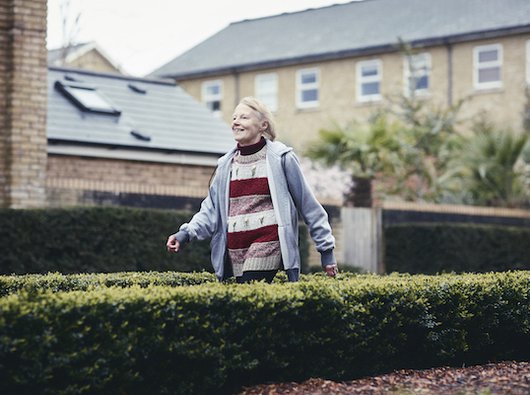Active monitoring in CLL
Because CLL is a slow-growing type of blood cancer, most people don’t need treatment when they’re diagnosed, and may not need treatment for several years.
What is active monitoring?
This approach of not having treatment until you need it is called active monitoring, and is sometimes referred to as "watch and wait" or "watchful waiting".
If you’re on active monitoring, you won’t have treatment, but you will have regular check-ups to monitor the CLL.
Many people feel confused and worried when they’re told they will just be monitored. It’s hard to understand and explain to others how you can have cancer but not need treatment. It can also cause anxiety as your next check-up comes nearer and you wait for test results.
It might help to know you’re not alone – in the UK there are around 27,000 people with blood cancer who are on active monitoring.
We have more information for people on active monitoring, including tips for coping emotionally.
You can also contact our Support Service for emotional support or join our online community forum to benefit from other people’s experience and advice about living on watch and wait.
"I still feel really anxious when I have blood tests or go for appointments, but gradually I’ve realised that there are things I can do to divert my mind and stop myself obsessing."
Erica, on active monitoring for CLL since 2003
Read Erica's story about coming to terms with active monitoring

Active monitoring FAQs
Why aren't I having treatment for CLL?
If you have no symptoms, or symptoms that aren’t affecting you greatly, your hospital team won’t recommend treatment. Instead, they will monitor the CLL and see how it develops. CLL can be treated and people can live with it for many years. But it’s incurable, so there is no advantage in treating it early if you are otherwise well – in fact it may be harmful to start treatment before it’s necessary. Treatment could make you unwell. It could also cause more resistant disease so it’s harder to treat when it comes back.
Thanks to research, treatments for CLL are improving all the time. So waiting may also give you the chance of a better treatment when the time comes.
What does active monitoring for CLL involve?
Active monitoring involves regular check-ups which could be with your GP or at a hospital. You’ll have blood tests to check your blood cell counts and general health, and you may have a physical examination to check for swollen lymph nodes (glands).
How often will I need a check up for CLL?
You’re likely to have between two and four check-ups in the first year after your diagnosis, but if everything remains stable, you may need one to two check-ups a year.
What if I notice new CLL symptoms between check ups?
If you get any new symptoms or your symptoms change, contact your hospital team or GP. It may help to keep a diary of your symptoms – this is useful for your doctor and may help you feel more in control of your health.
How long will I be on active monitoring for CLL?
This depends on your individual circumstances, but many people stay on watch and wait for several years. Some people never need treatment.
How will I know when I need treatment for CLL?
Your hospital team will look for these things when considering if it’s time to start treatment:
- Rapidly increasing lymphocyte count – The number of lymphocytes in your blood is over 30 per 109/l and this doubles in under 12 months.
- Anaemia – You have a low number of red blood cells, which carry oxygen around your body.
- Low platelets – You have a low number of platelets, blood cells which help to stop you bleeding if you’re injured.
- Swollen lymph nodes – One or more of your lymph nodes (glands) are growing quickly, are over 10cm long or are causing symptoms.
- Swollen spleen – Your spleen (an organ that’s part of your immune system) is significantly enlarged or causing symptoms.
- "B" symptoms – You have a temperature over 38°C with no other signs of infection, drenching night sweats, or you’ve lost more than 10% of your body weight in the past 6 months without trying.
- Significant fatigue – You feel extreme tiredness which makes it difficult to carry on with everyday activities.
None of these things is an automatic trigger for starting treatment, but they will influence decisions about when to start treatment. Tell your hospital team or GP if you notice any new or worsening symptoms.
Coping emotionally on active monitoring
Our free booklet about CLL has some ideas on how to look after your mental health while you're on active monitoring, including waiting for test results. We also have a range of self-help ideas to try in our section on living well with blood cancer.
If you feel you need professional help, you can ask your GP or hospital team for a referral for counselling.
Contact our Support Service free on 0808 2080 888 if you’d like to talk anything through.
You may also like to join our online community forum to connect with other people on watch and wait who will really understand how you’re feeling.
